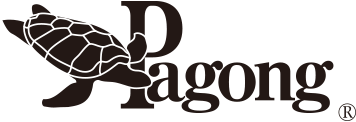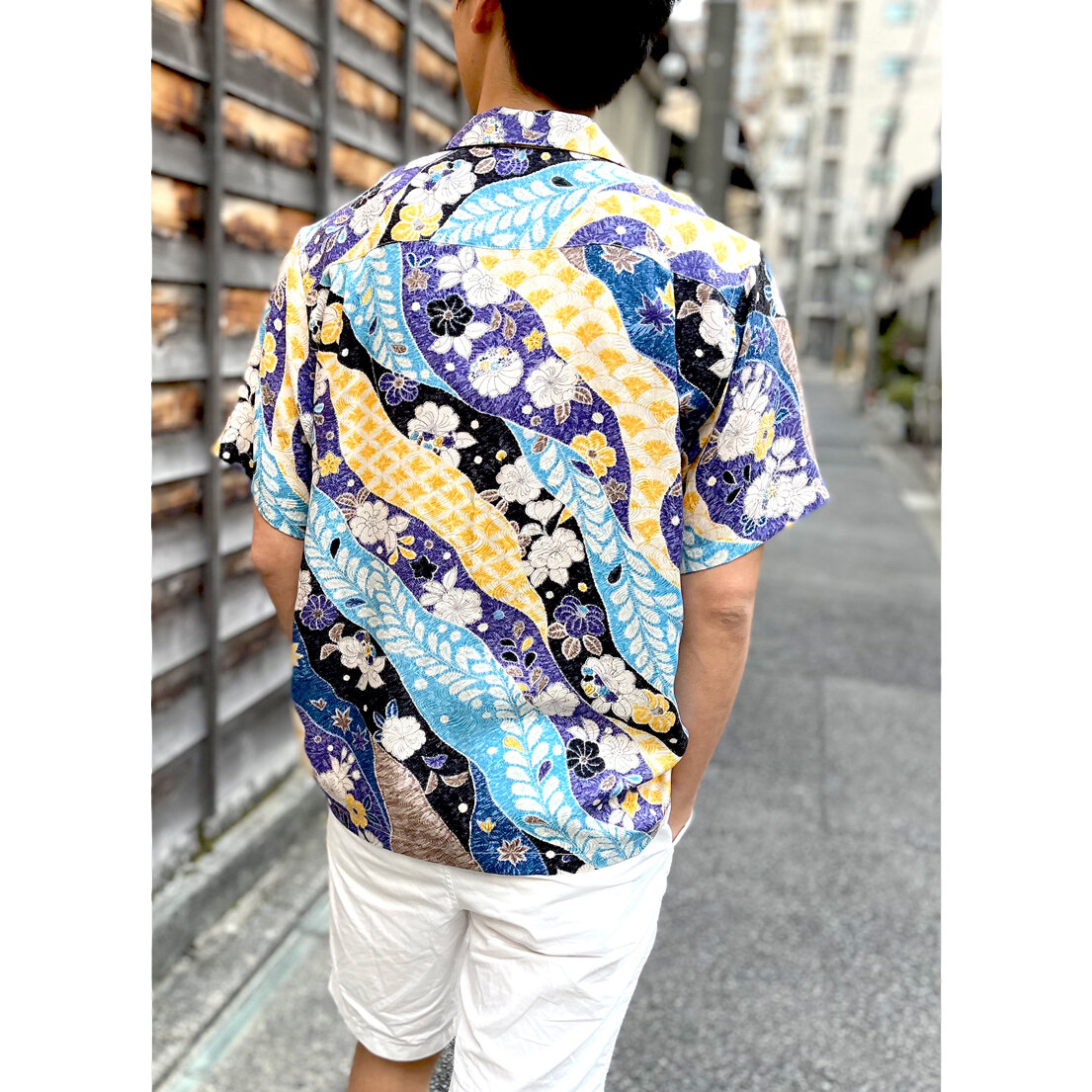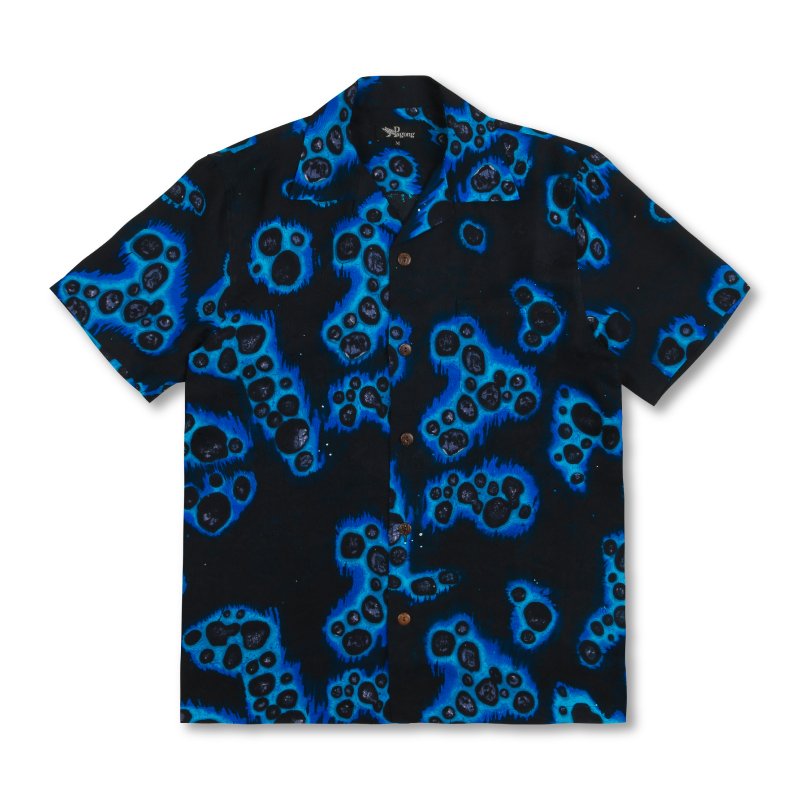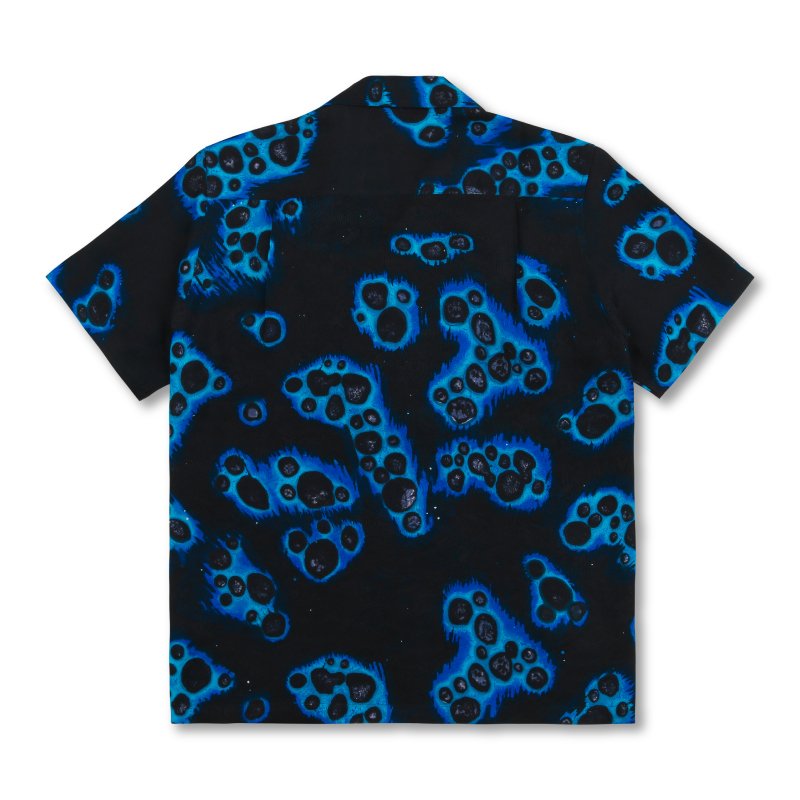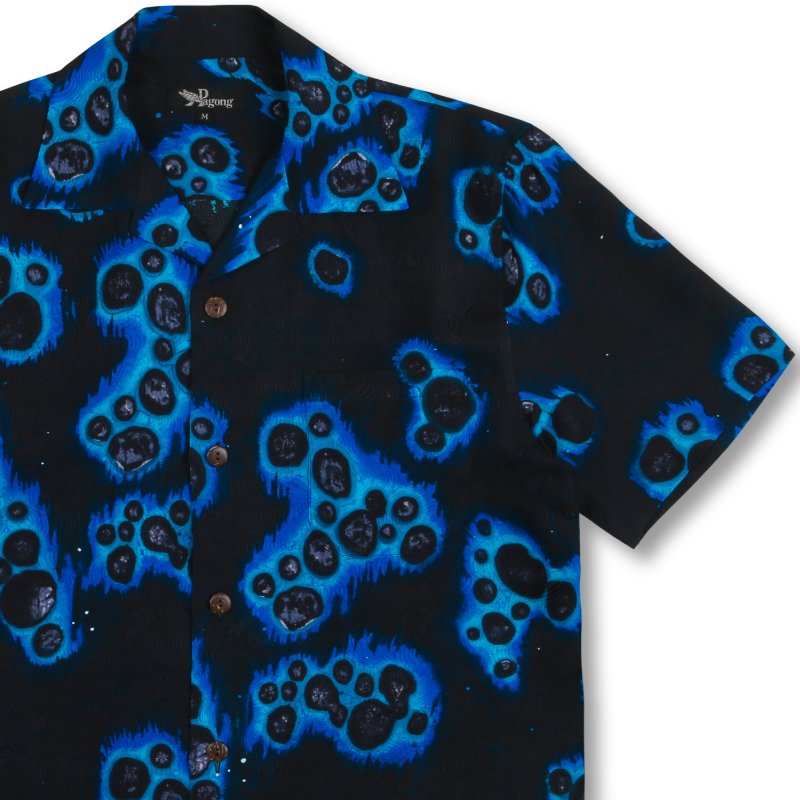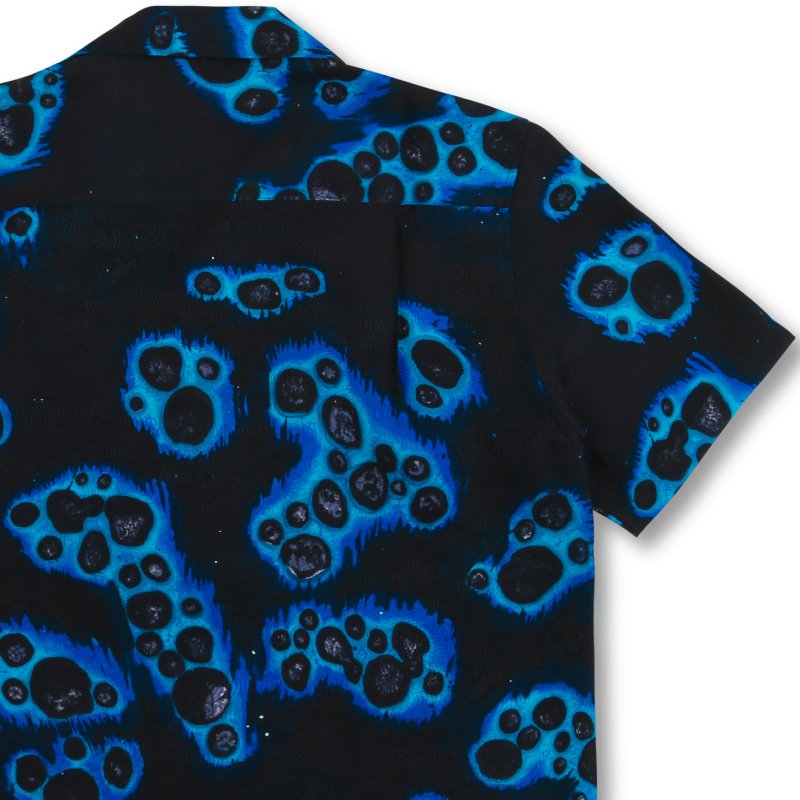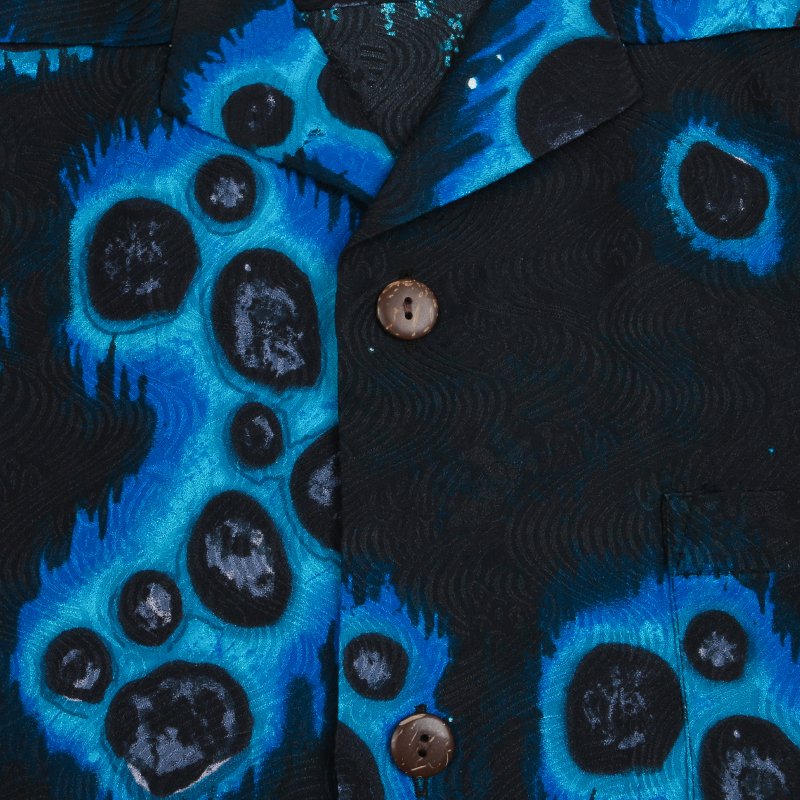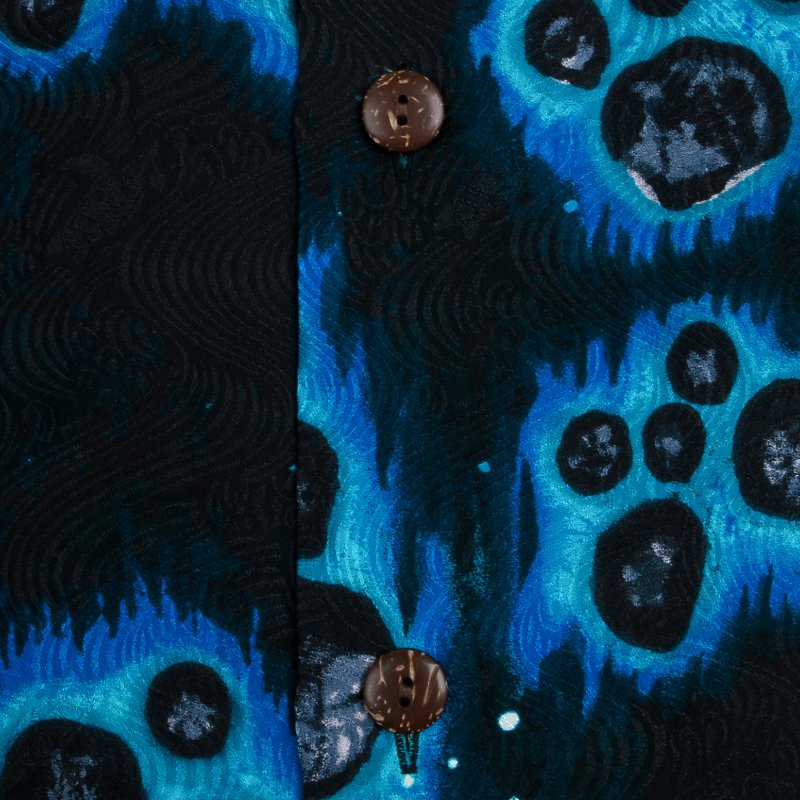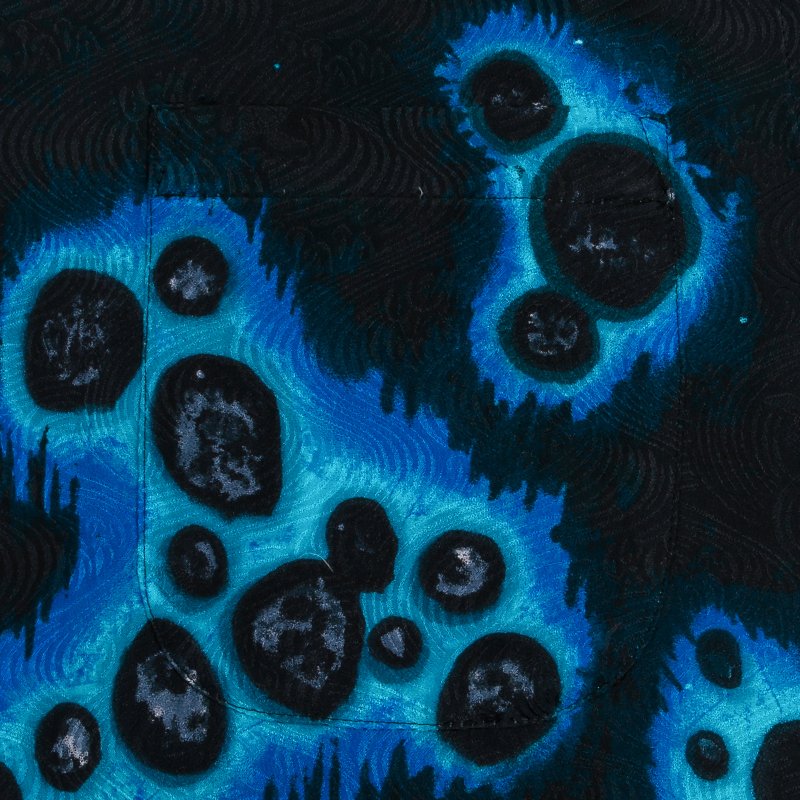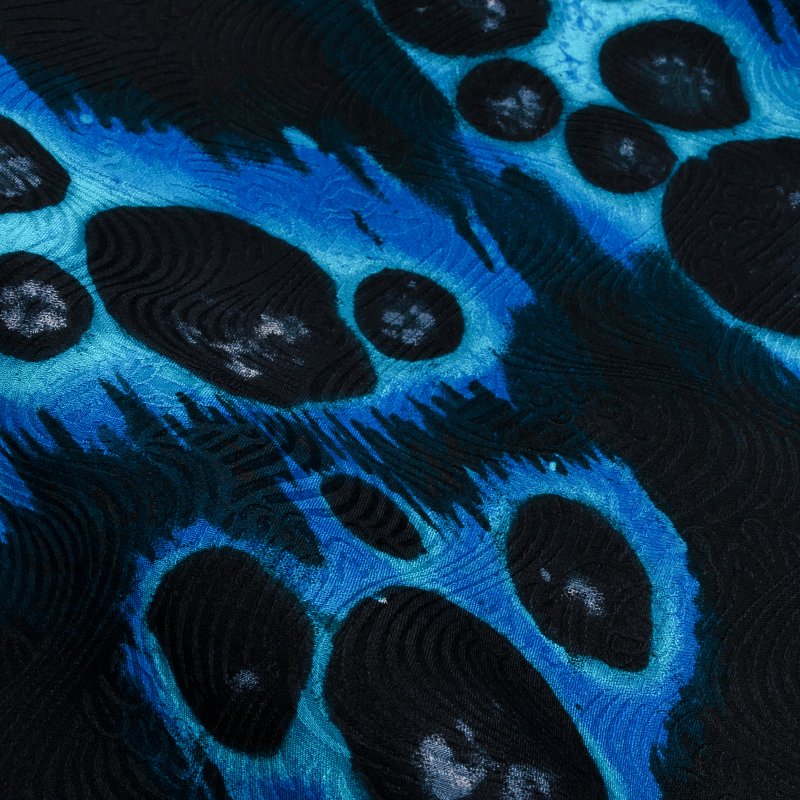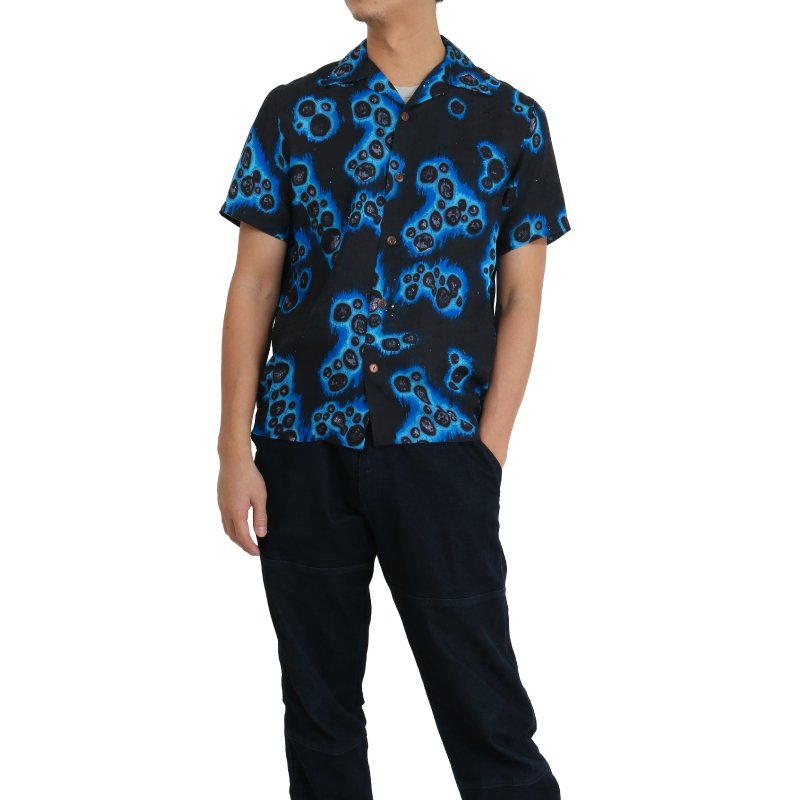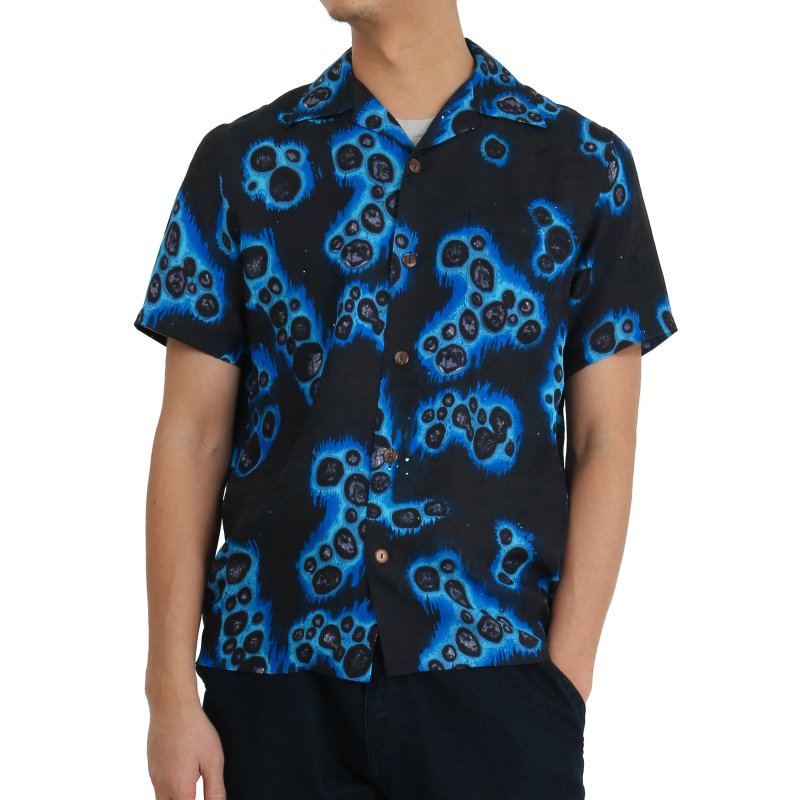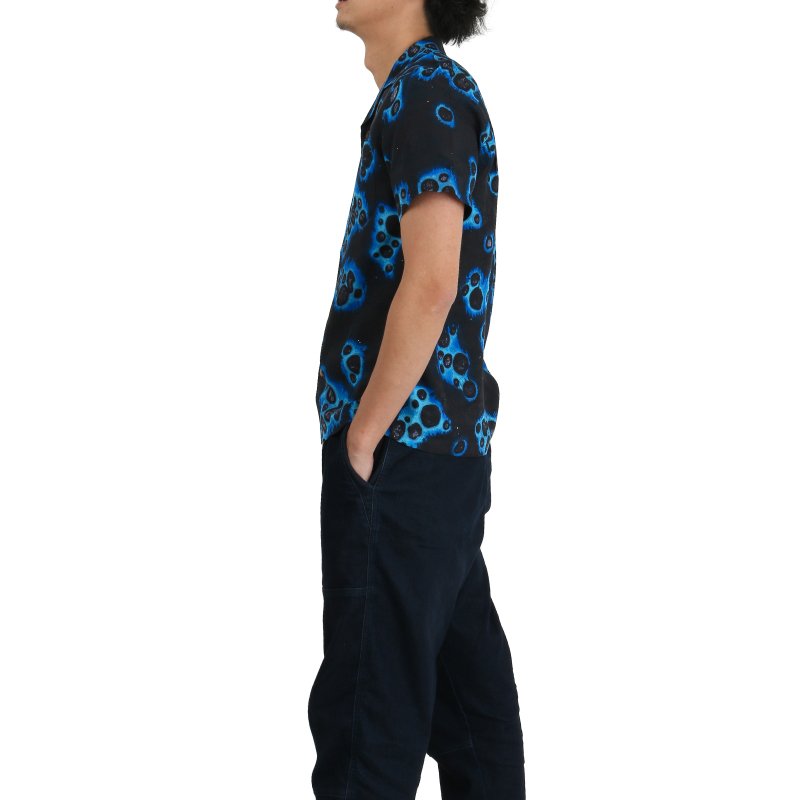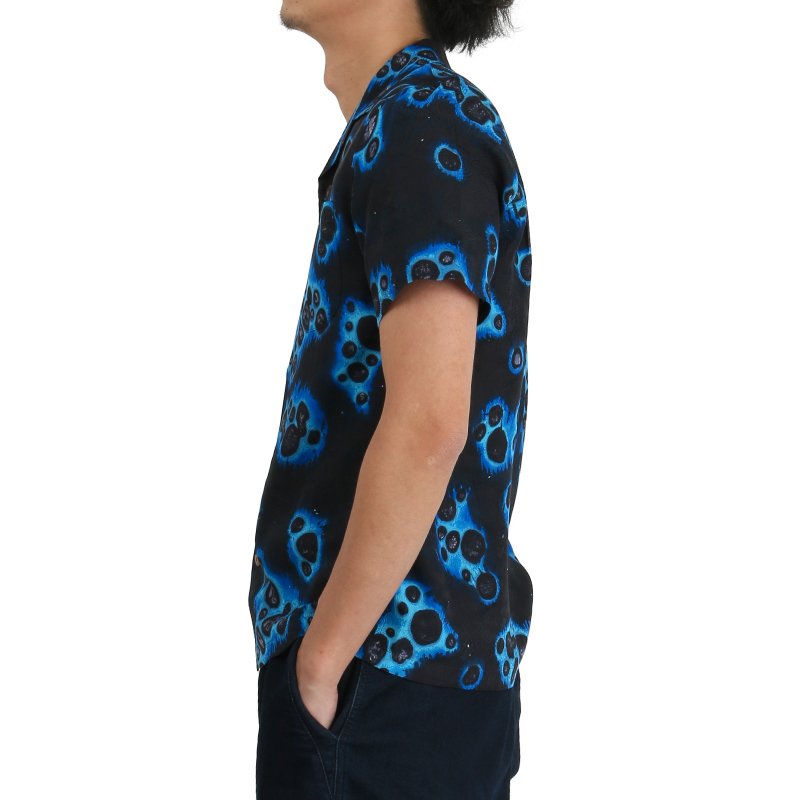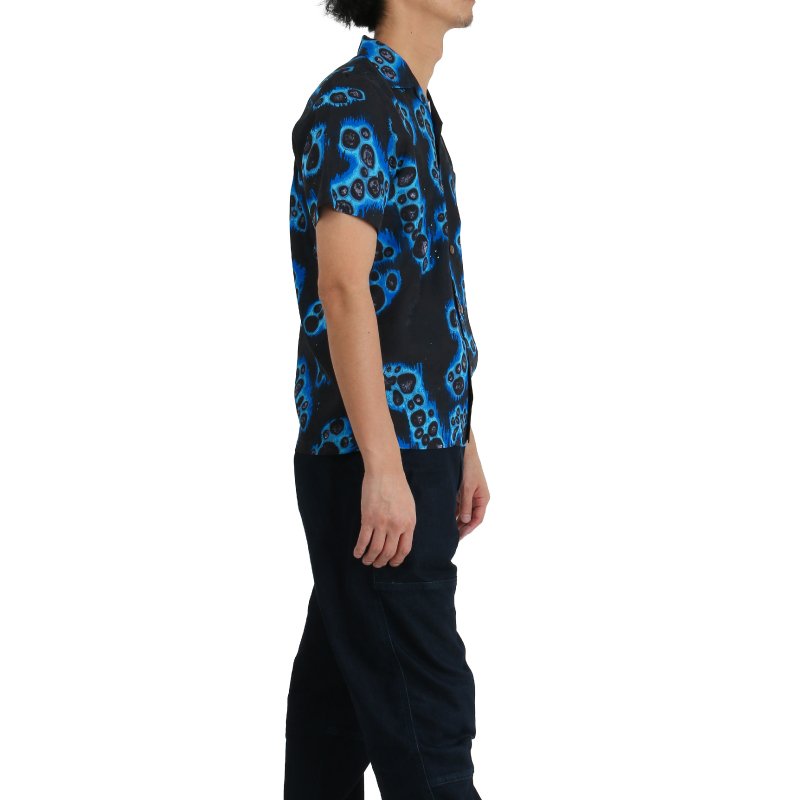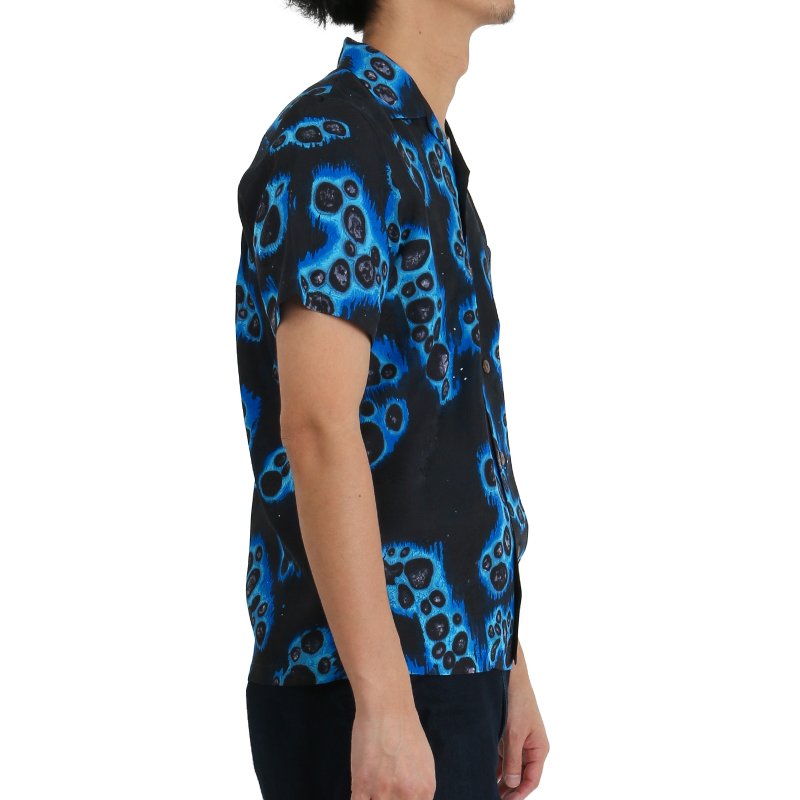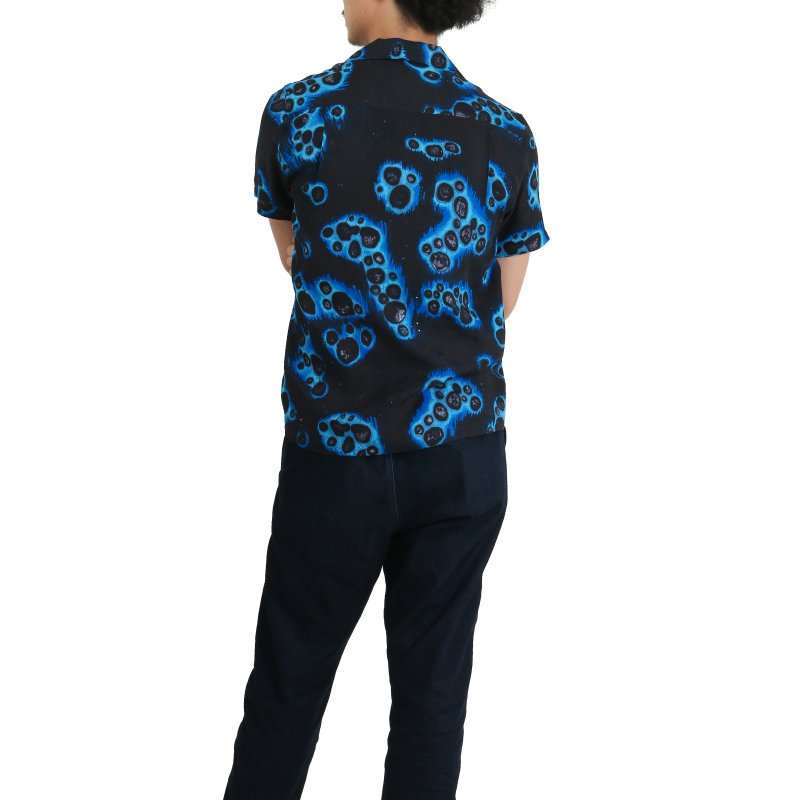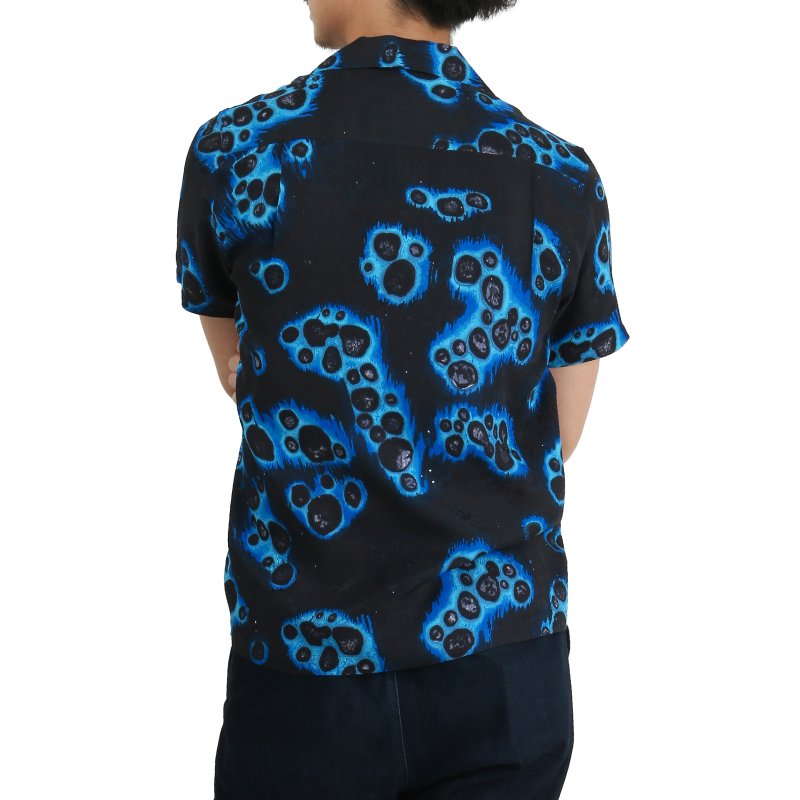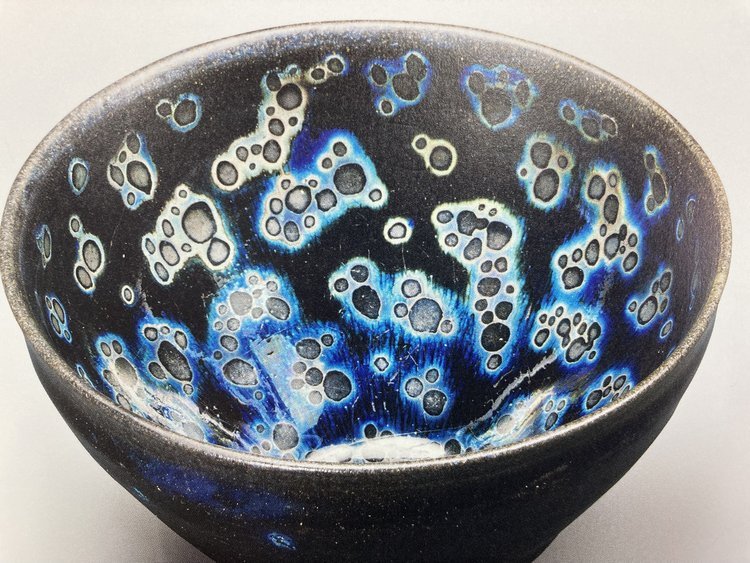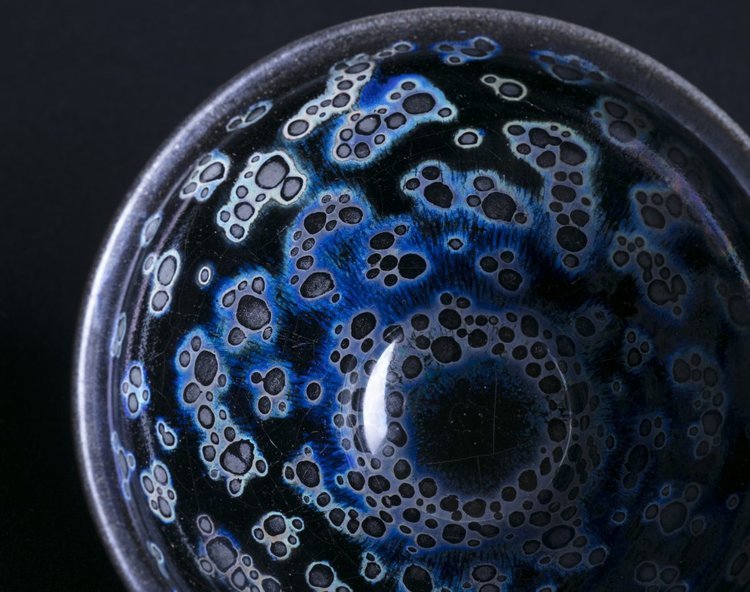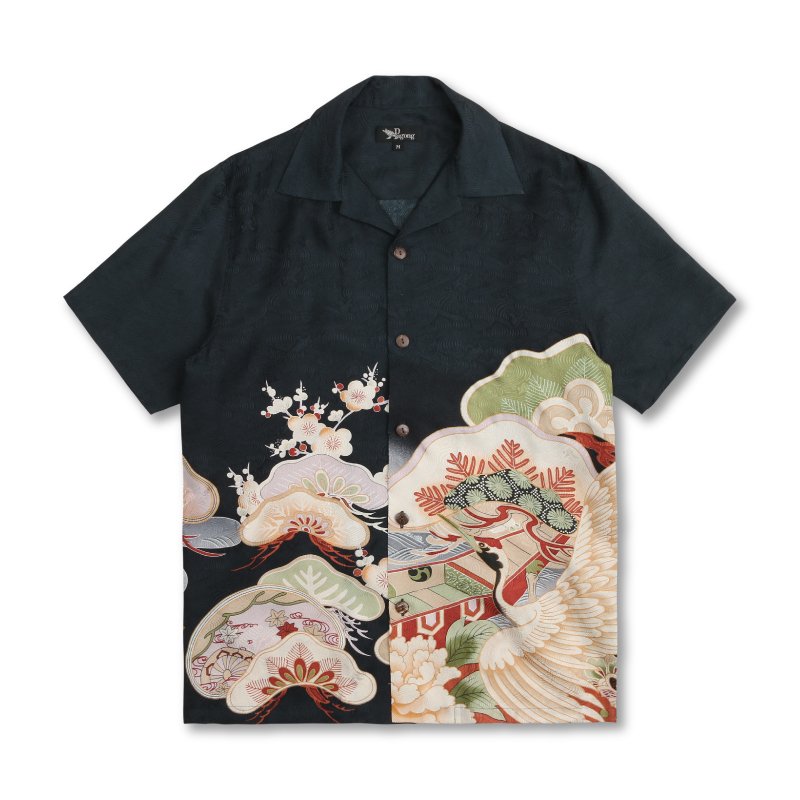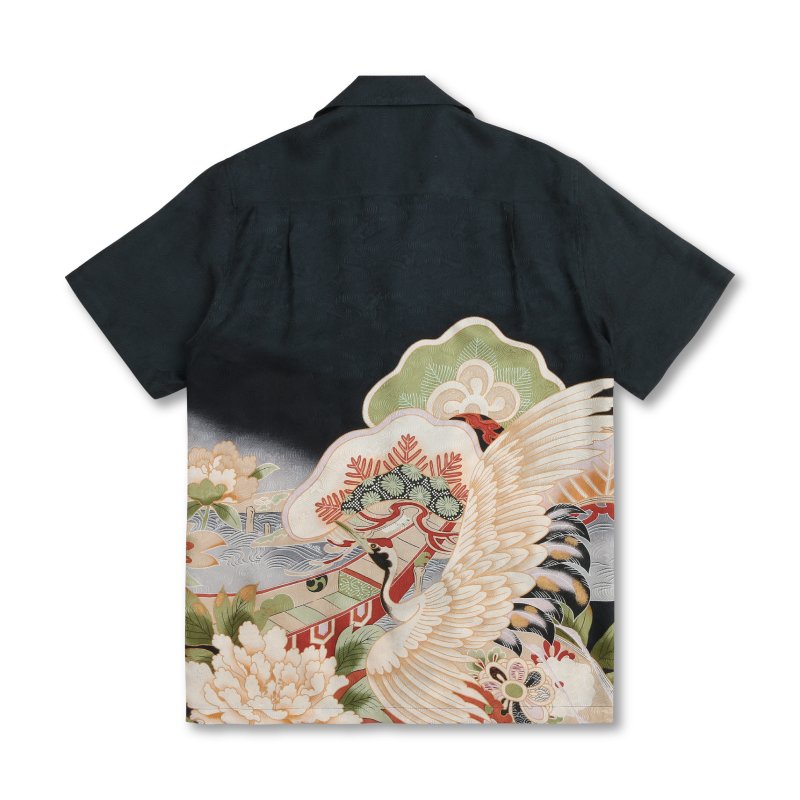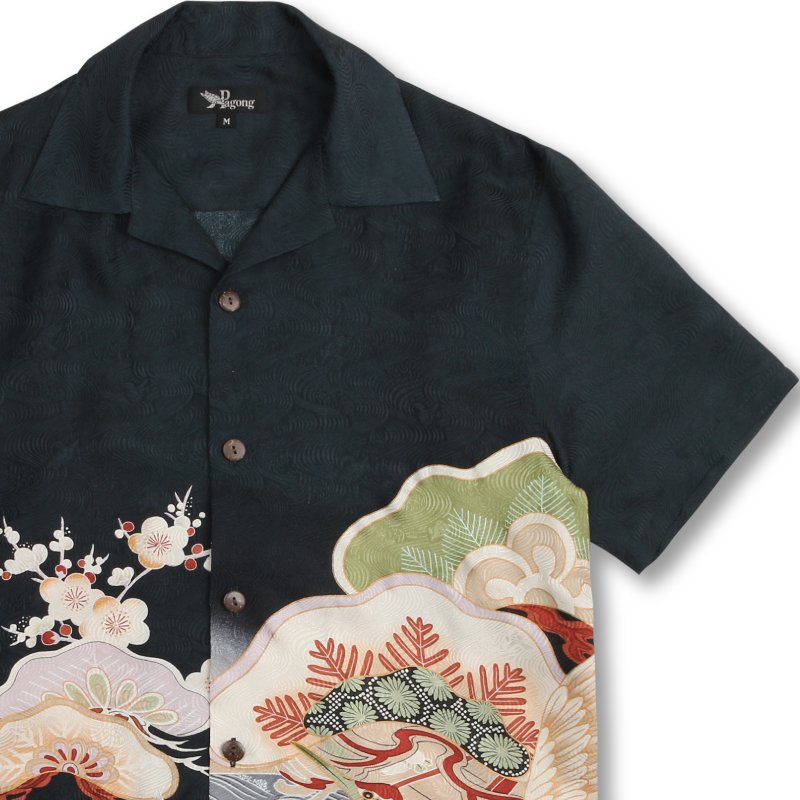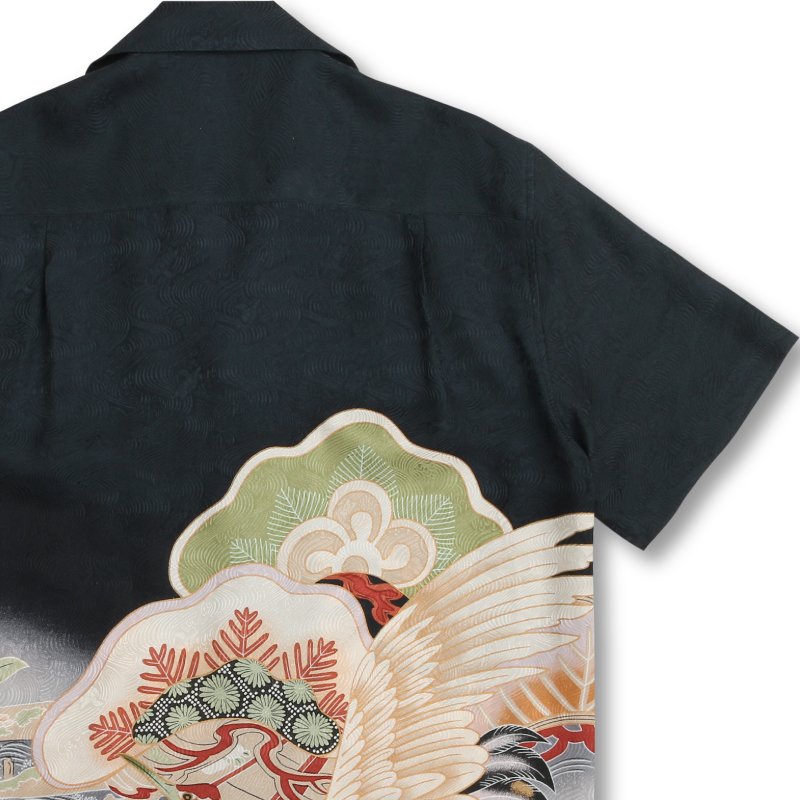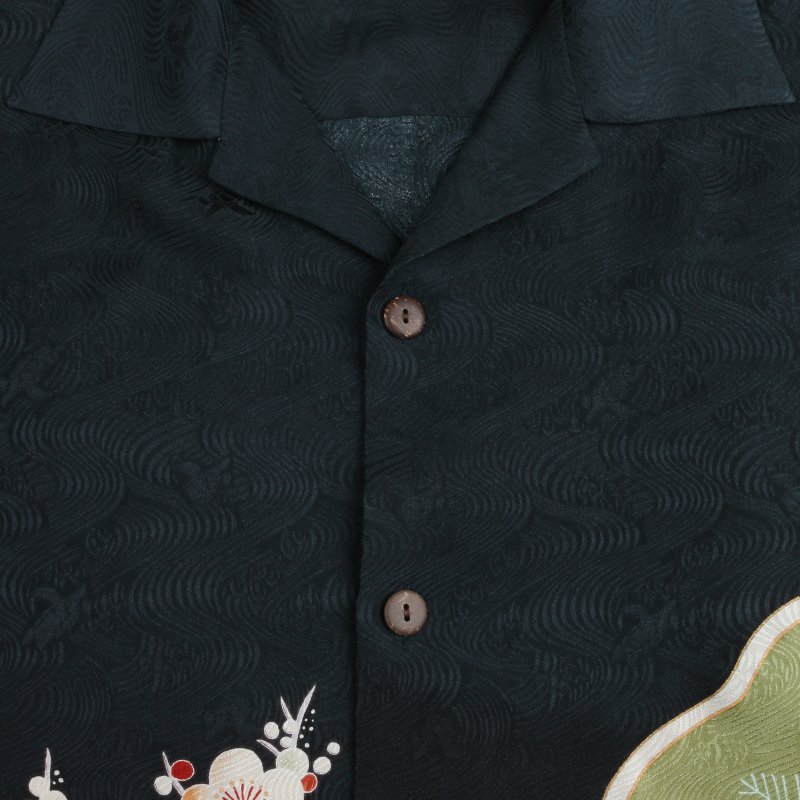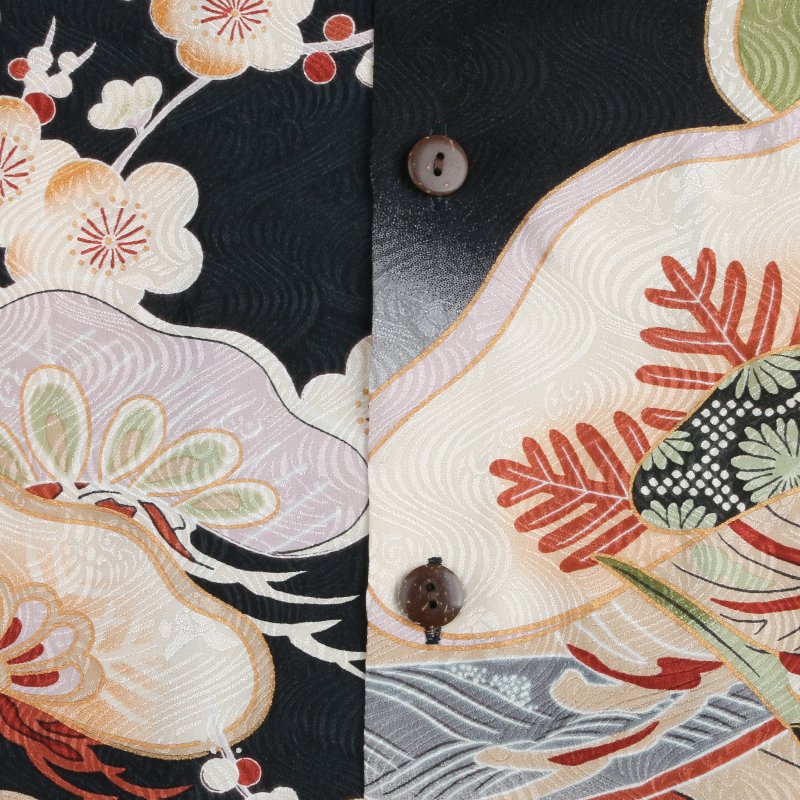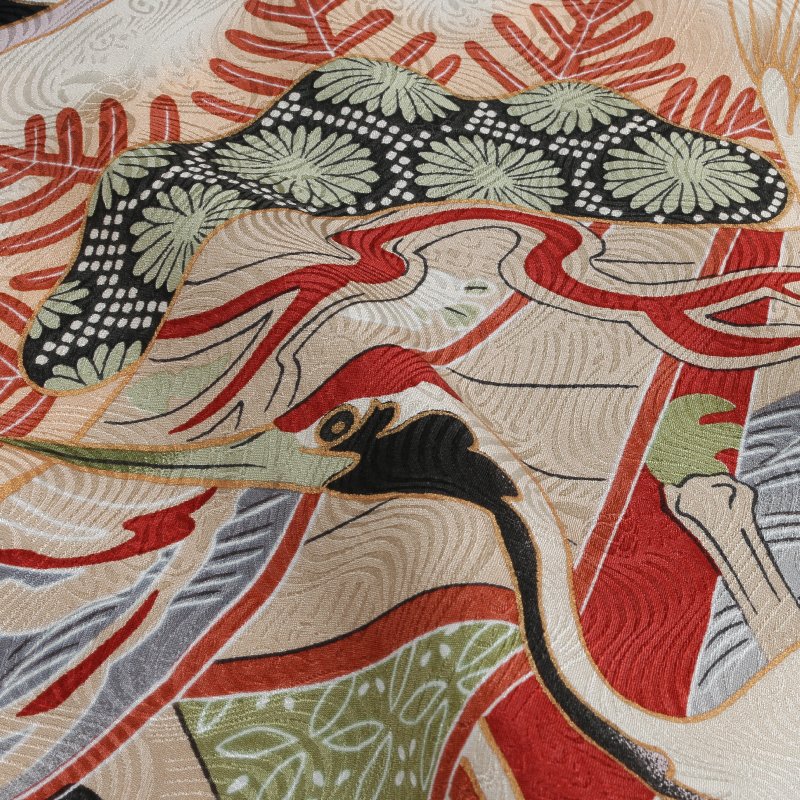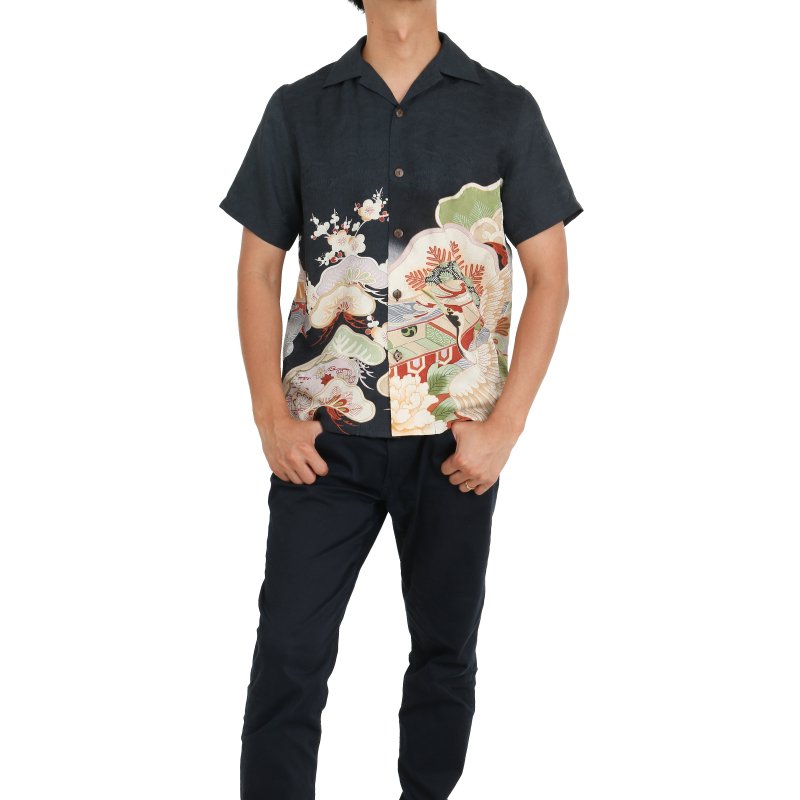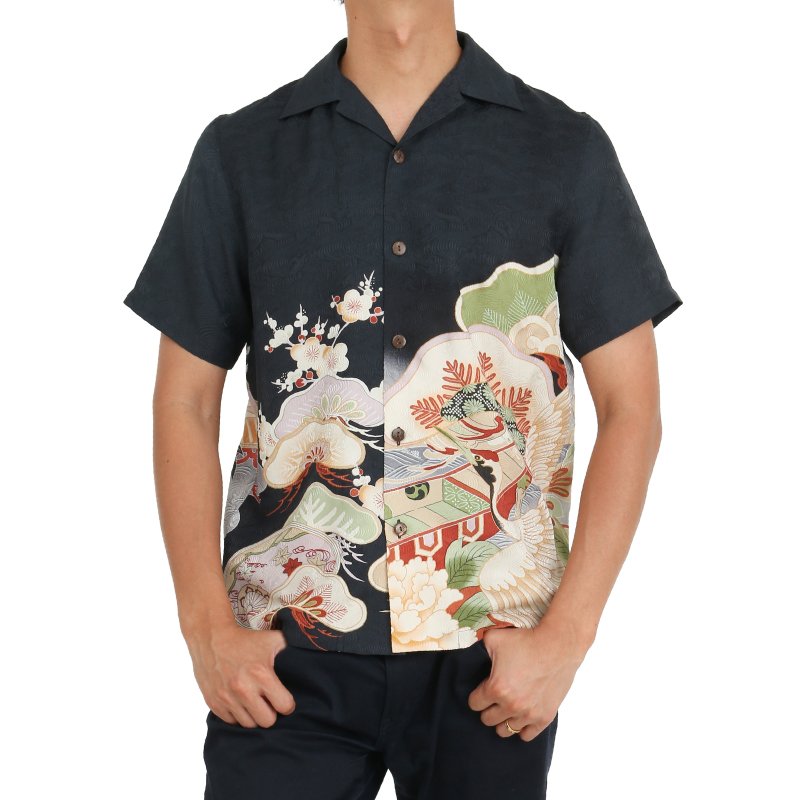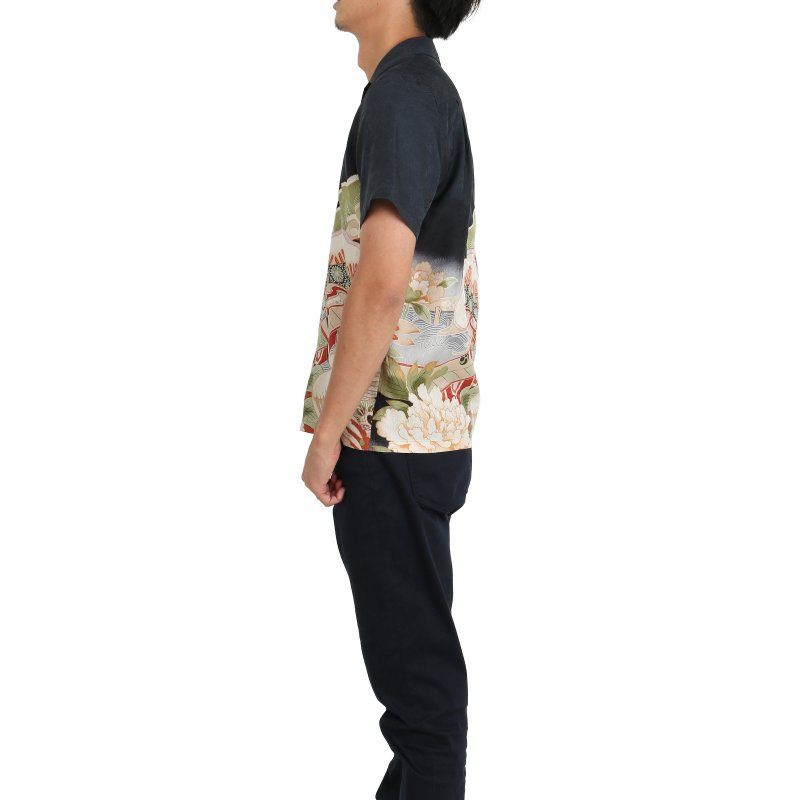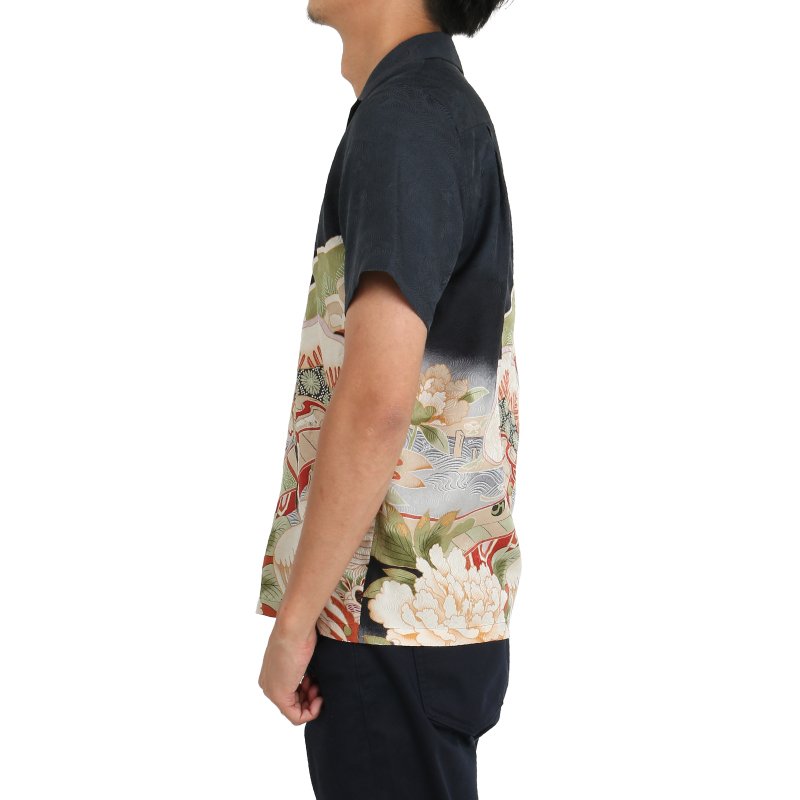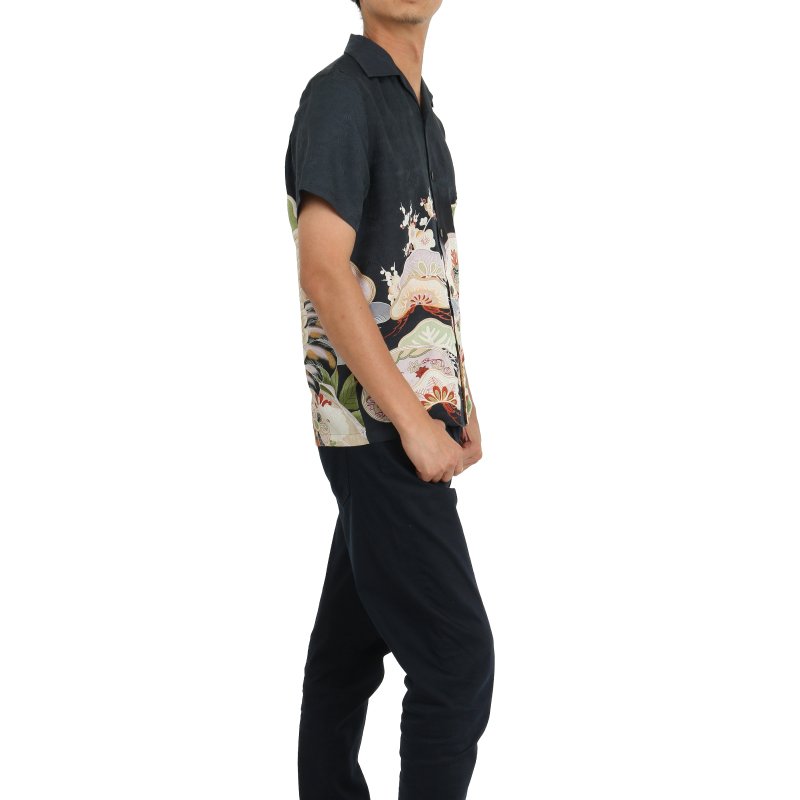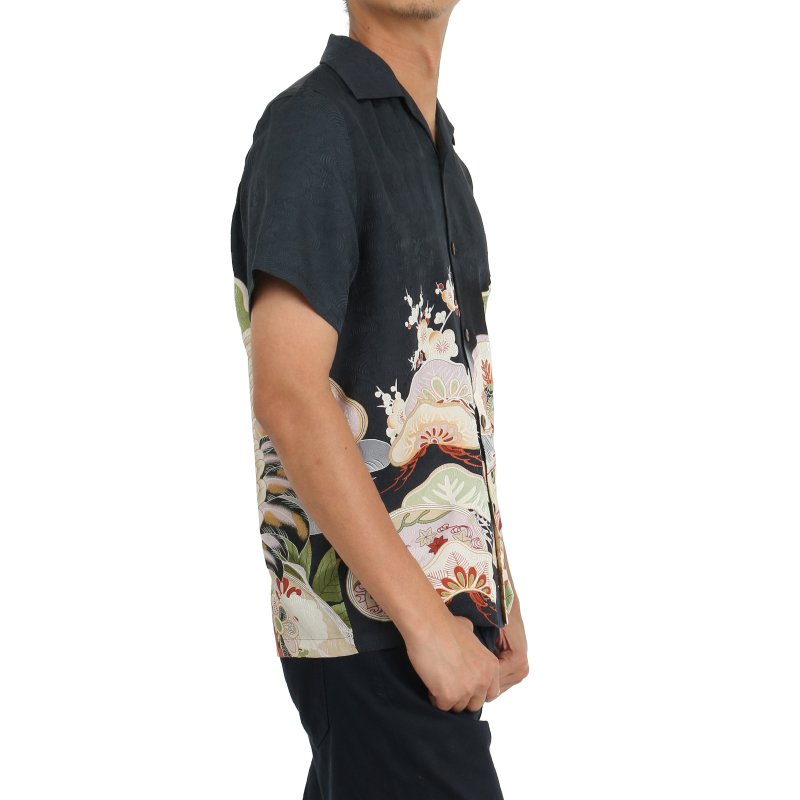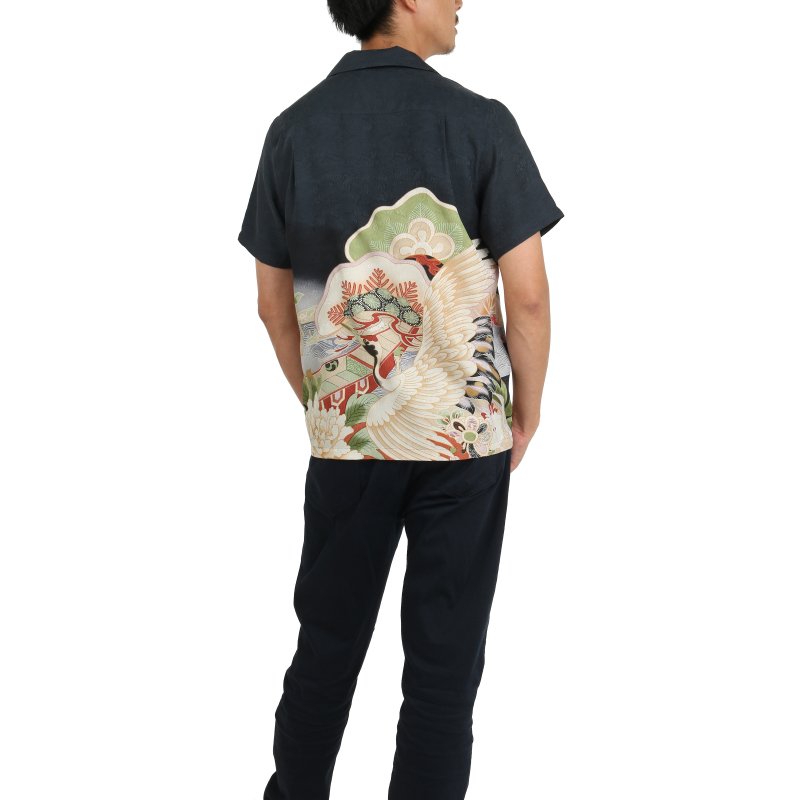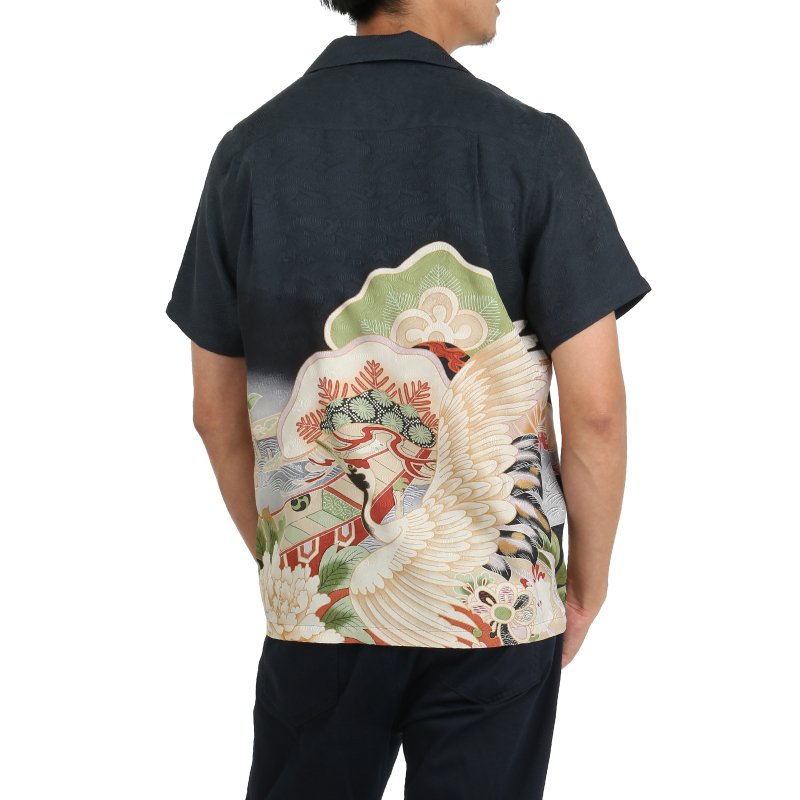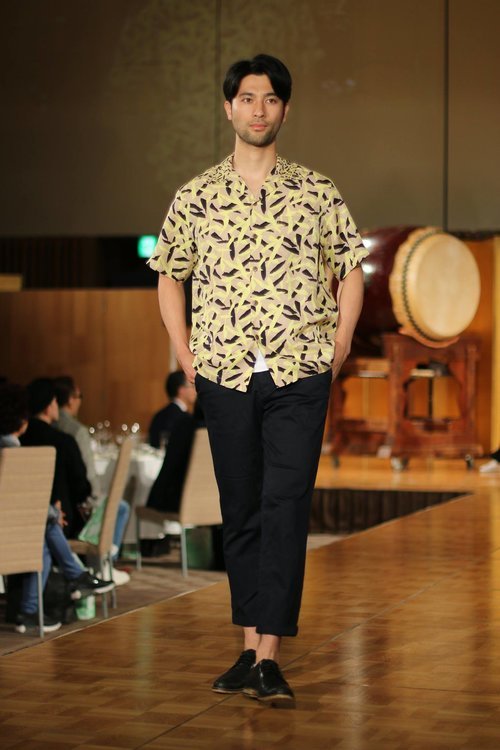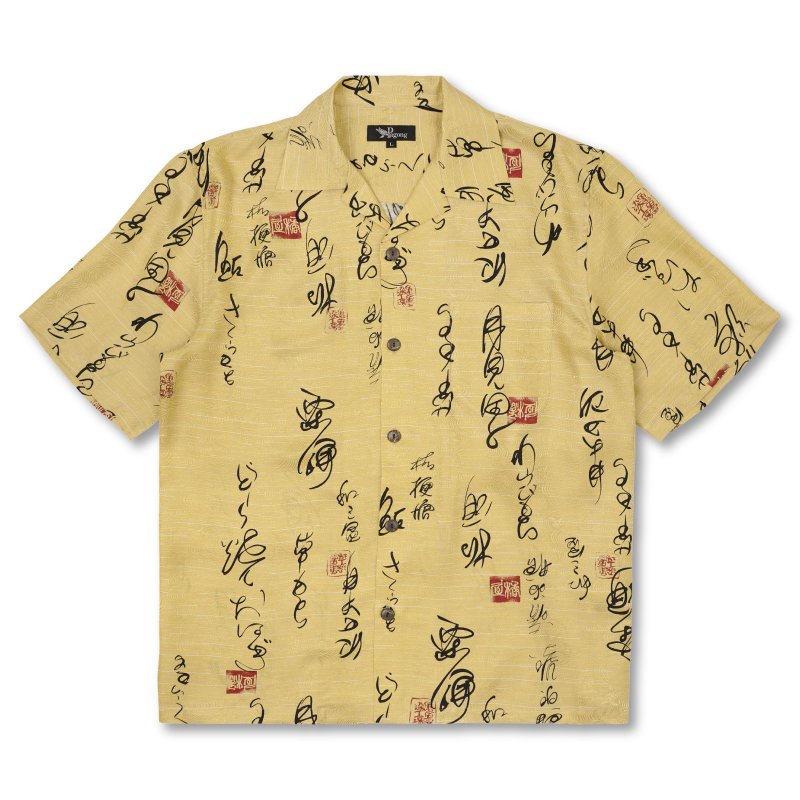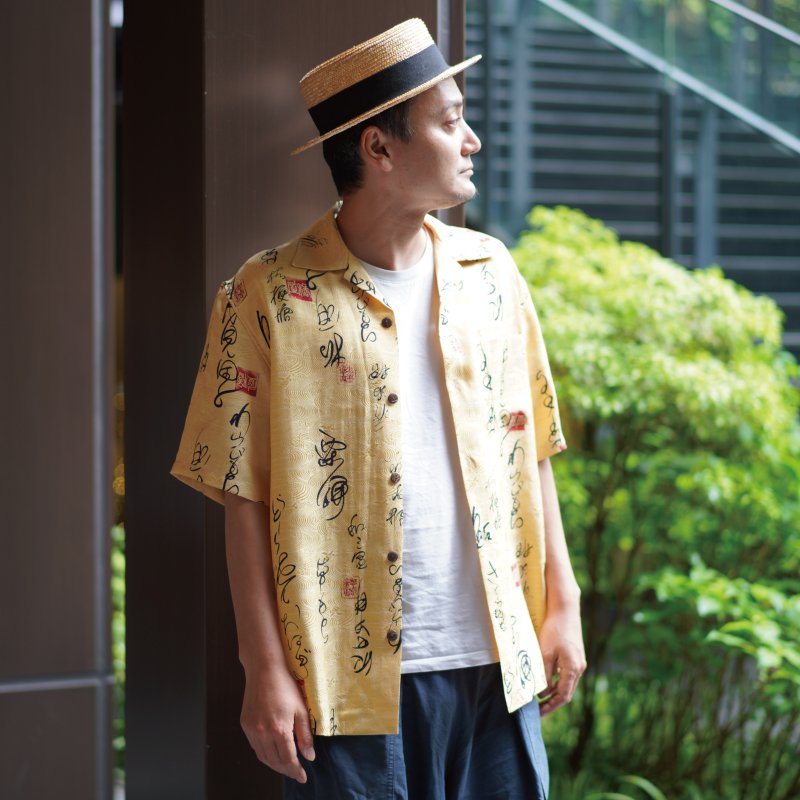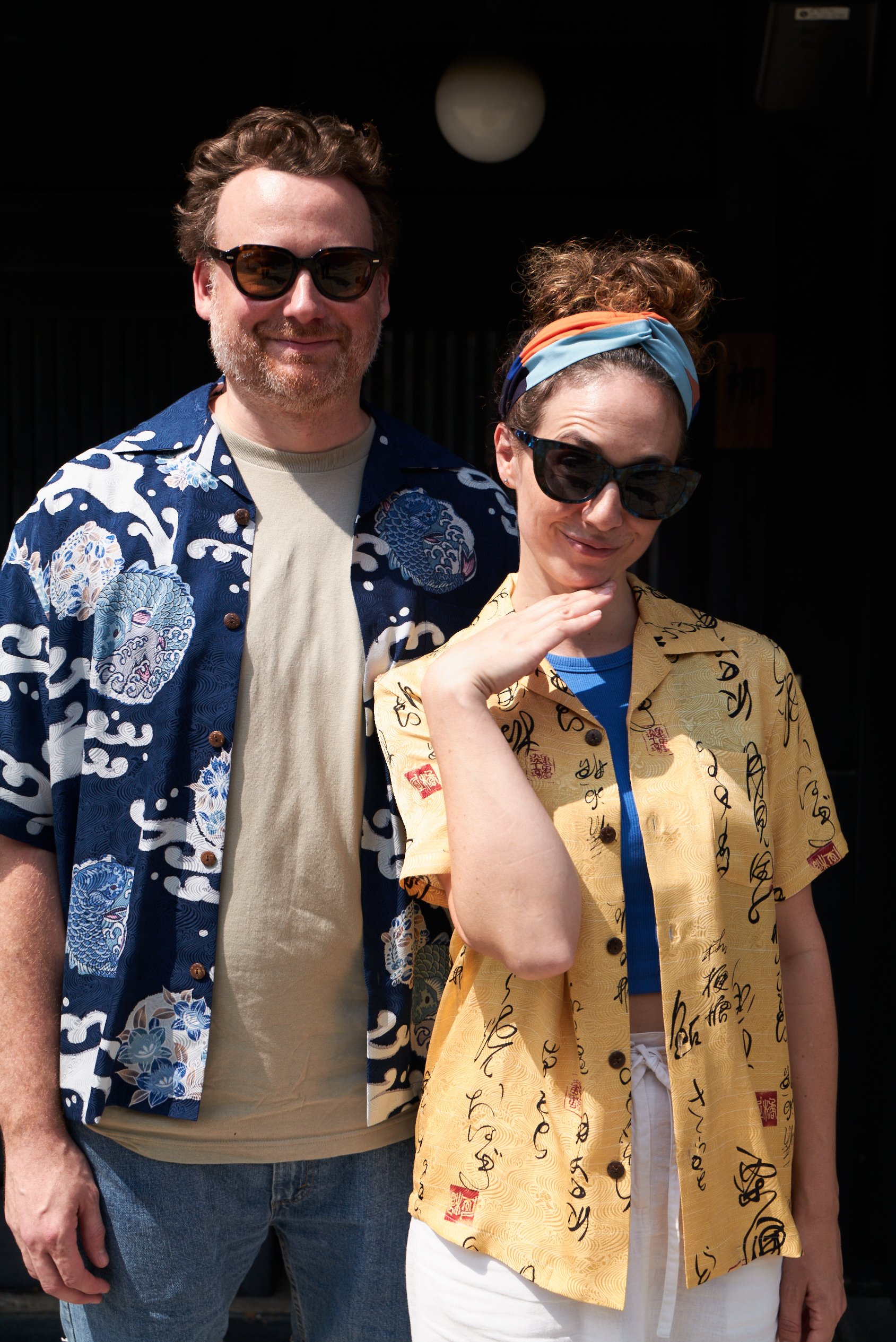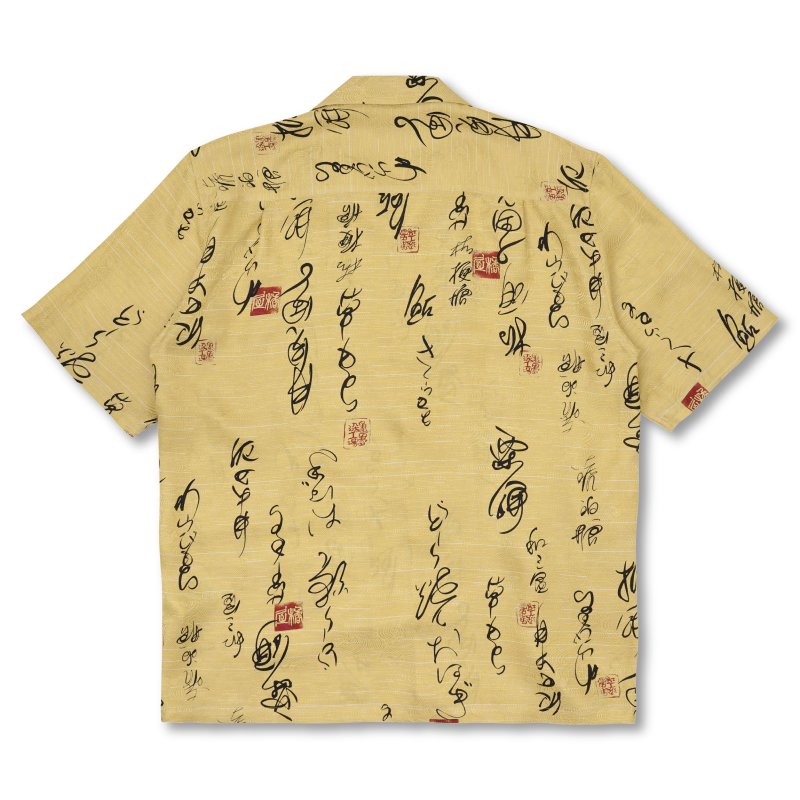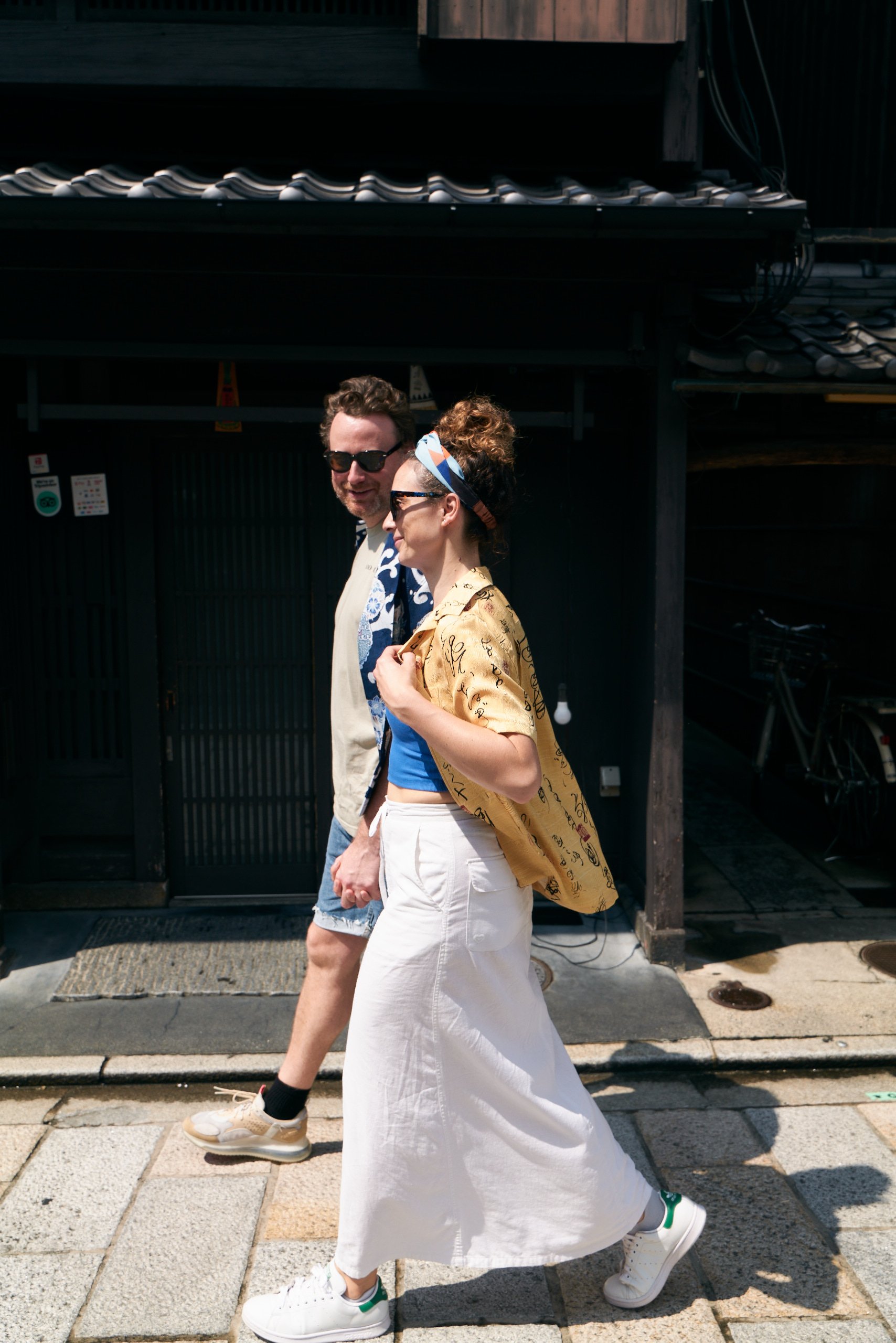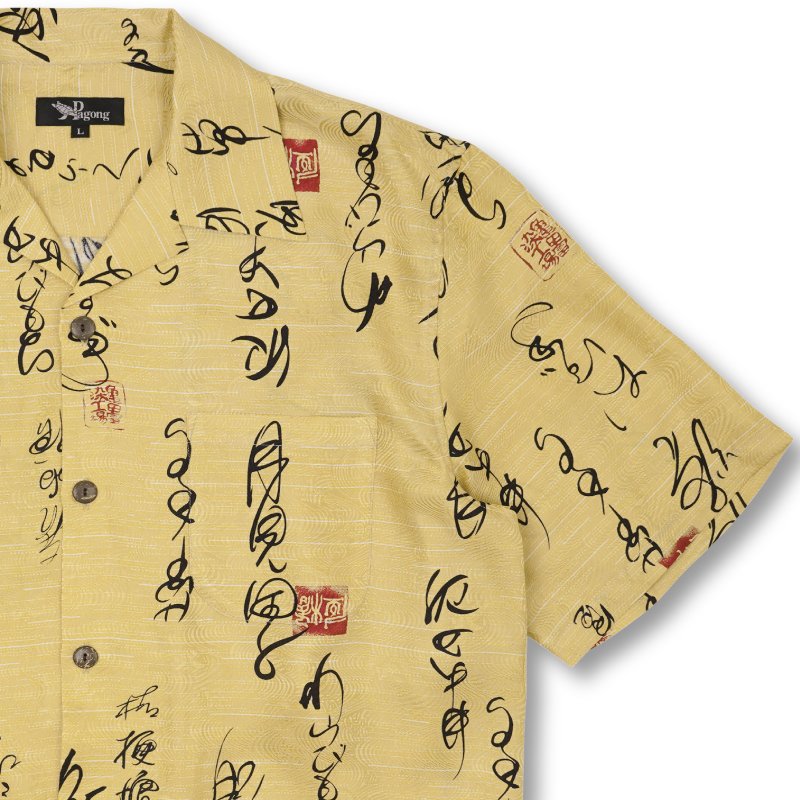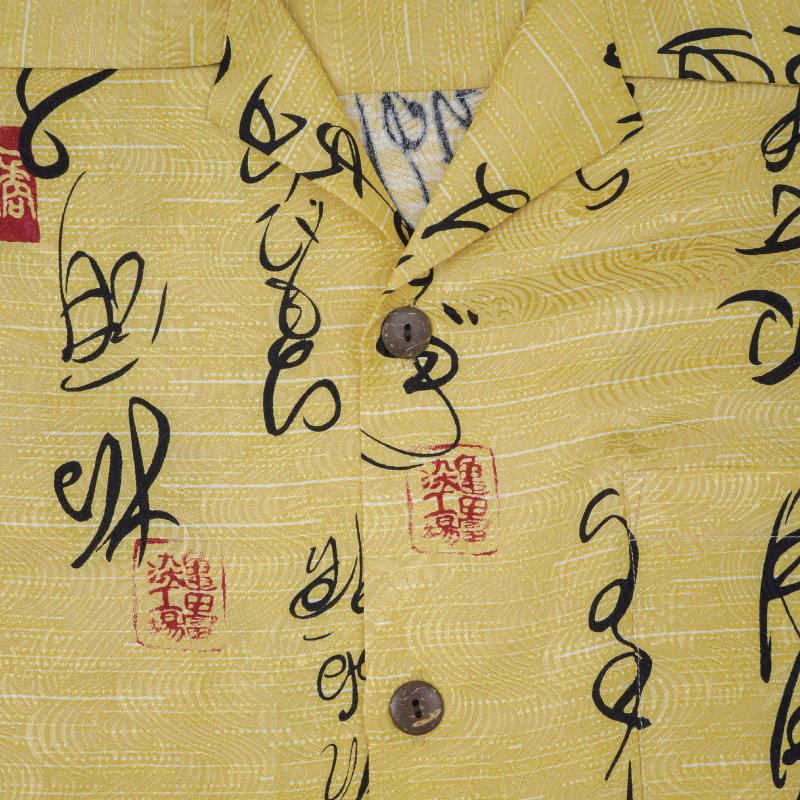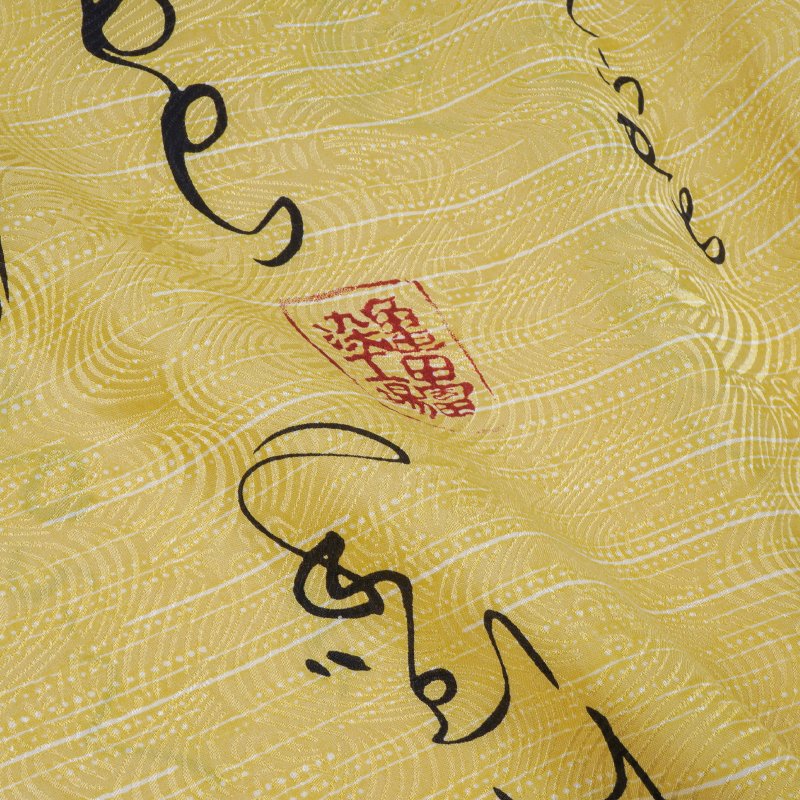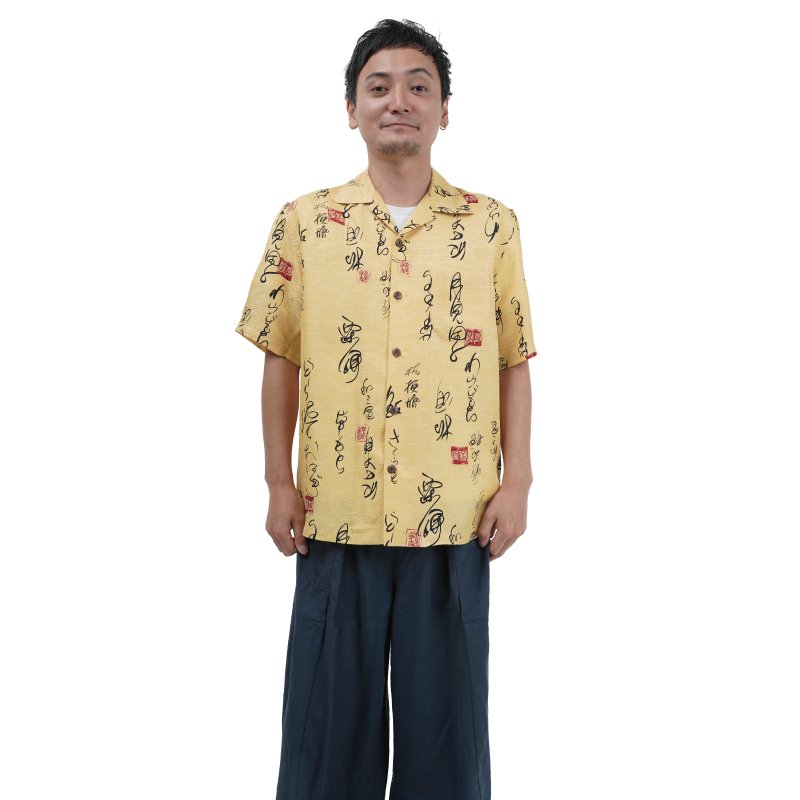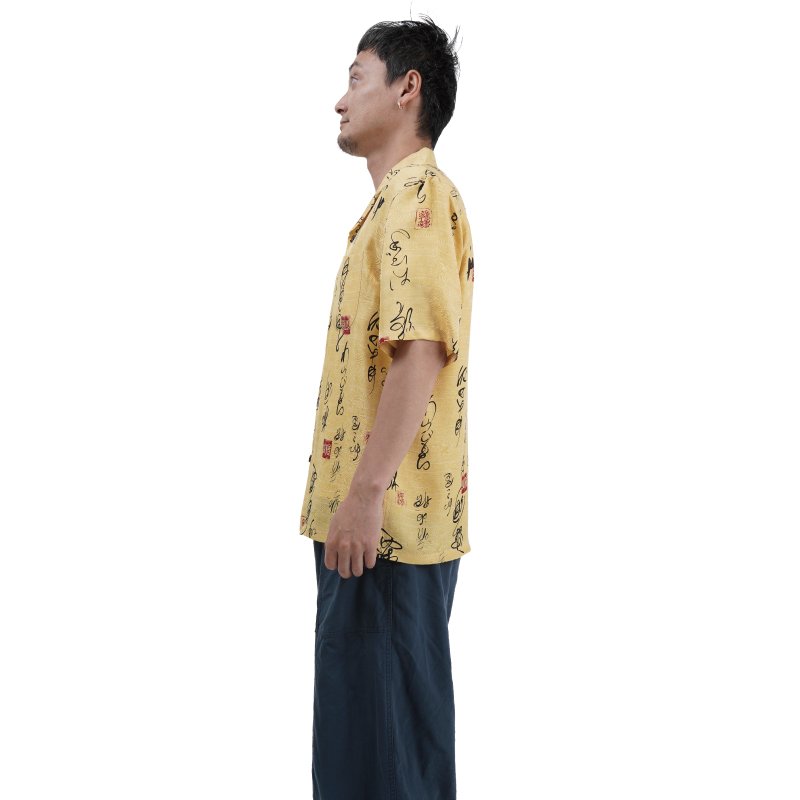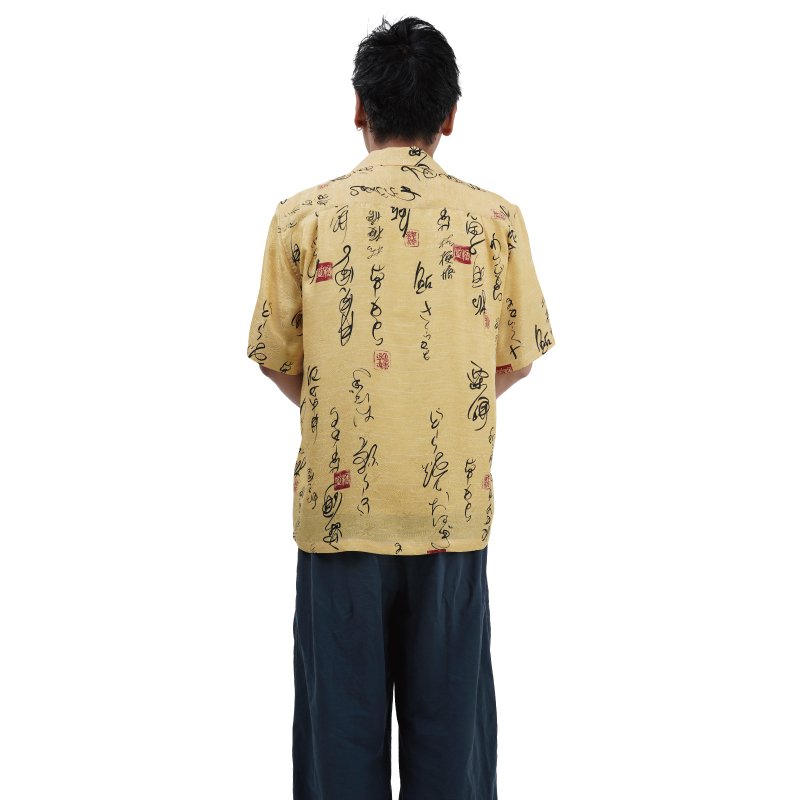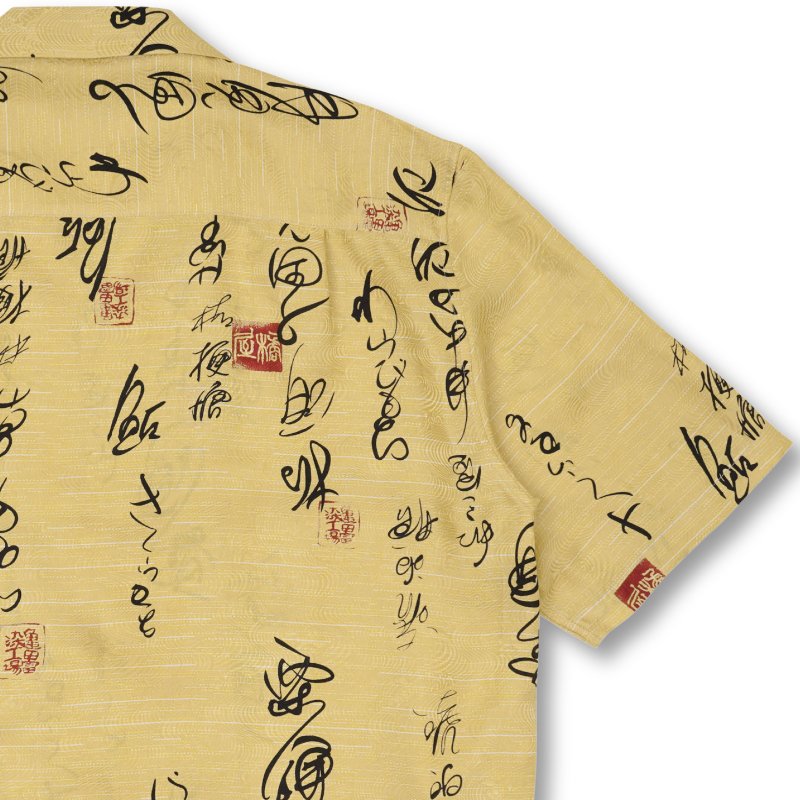TSUJIGAHANA (BLUE) Silk Aloha Shirt
Japanese name/ 辻ヶ花 (Tsujigahana)
The pattern name “tsuji ga hana” first emerged in 15th century Japanese literature. It is described as being the oldest dyeing method from the Nara-era, the capital of Japan before Kyoto; and consists of making tiny stitches which are pulled within a pattern and then dyed. The patterned areas are distinctly made to look as though they are using torn pieces of paper.
In the form of luxurious kimono, tsujigahana was often further embellished with the addition of real gold leaf and embroidery.
In this Aloha shirt, Pagong has replicated the patterning of tsujigahana by using the method of Kyoto-Yuzen.
・Currency : US Dollar (USD)
・100% Silk (Custom-woven Jacquard )
・Made in Japan
・Classic-fit Aloha shirt
・Coconut buttons
・Dry-clean
Japanese name/ 辻ヶ花 (Tsujigahana)
The pattern name “tsuji ga hana” first emerged in 15th century Japanese literature. It is described as being the oldest dyeing method from the Nara-era, the capital of Japan before Kyoto; and consists of making tiny stitches which are pulled within a pattern and then dyed. The patterned areas are distinctly made to look as though they are using torn pieces of paper.
In the form of luxurious kimono, tsujigahana was often further embellished with the addition of real gold leaf and embroidery.
In this Aloha shirt, Pagong has replicated the patterning of tsujigahana by using the method of Kyoto-Yuzen.
・Currency : US Dollar (USD)
・100% Silk (Custom-woven Jacquard )
・Made in Japan
・Classic-fit Aloha shirt
・Coconut buttons
・Dry-clean
Japanese name/ 辻ヶ花 (Tsujigahana)
The pattern name “tsuji ga hana” first emerged in 15th century Japanese literature. It is described as being the oldest dyeing method from the Nara-era, the capital of Japan before Kyoto; and consists of making tiny stitches which are pulled within a pattern and then dyed. The patterned areas are distinctly made to look as though they are using torn pieces of paper.
In the form of luxurious kimono, tsujigahana was often further embellished with the addition of real gold leaf and embroidery.
In this Aloha shirt, Pagong has replicated the patterning of tsujigahana by using the method of Kyoto-Yuzen.
・Currency : US Dollar (USD)
・100% Silk (Custom-woven Jacquard )
・Made in Japan
・Classic-fit Aloha shirt
・Coconut buttons
・Dry-clean
All of our 100% silk aloha shirts have our logo of “sea turtle and wave”, woven into our custom-made silk fabric.
We take pride in our clothing being designed, dyed, steamed, washed, and sewn entirely in Kyoto, Japan. Over this intricately woven pattern, we dye our designs…
Pagong’s personal archives house 6000 Kimono patterns, which we choose from, as well as from museum archives.
If there is anything we can help you with, please feel free to let us know.
Contact Form >> www.pagongkyoto.com/contact
